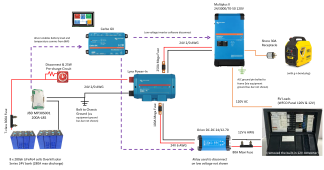Personally, I had problems with wildly fluctuating current readings in the BMS (both Daly and JK) while using an 230V inverter/charger, this caused the BMS SOC reading to be incorrect.The BMS can also measure the SOC and other parameters identical to the smartshunt. So why not keep the money in your pocket from the shunt and use the BMS information. This can also be connected to the GX device so you can read the SOC. This can be either the Cerbo or the multiplus. If it doesn’t work as you wanted then install the smartshunt later on.
Luckily, the Victron shunt solves this and I can monitor the battery using the Cerbo GX and the shunt.
Last edited:





